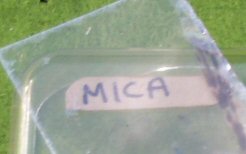
Mica
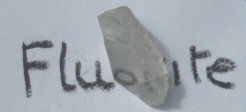
Fluorite

Citrine
 Garnet |
 Peridot |
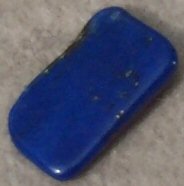
Lapis Lazuli

Jasper
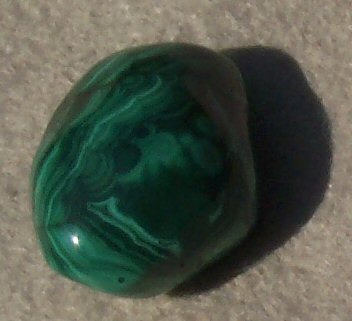
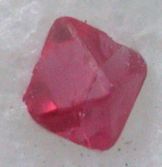 The most obvious visual property of a mineral is colour. Most people assume that stones are dull, grey objects, and that you need something organic or manmade to be brightly coloured. However, a list of minerals by colour shows you what the range can be, and how vivid the colours. Colour is one of the ways to identify a mineral. Once you've seen the stripey green of Malachite (see left) you will find it easy to recognise it in future. Gemstones are associated with lovely colours, although one mineral can be mistaken for another. Spinel (right) is often confused with ruby. An important use of colour in minerals, especially soft ones, is as pigments.
The most obvious visual property of a mineral is colour. Most people assume that stones are dull, grey objects, and that you need something organic or manmade to be brightly coloured. However, a list of minerals by colour shows you what the range can be, and how vivid the colours. Colour is one of the ways to identify a mineral. Once you've seen the stripey green of Malachite (see left) you will find it easy to recognise it in future. Gemstones are associated with lovely colours, although one mineral can be mistaken for another. Spinel (right) is often confused with ruby. An important use of colour in minerals, especially soft ones, is as pigments.
| Transparent | Transluscent | Opaque | ||
|---|---|---|---|---|
| It's clear. You can see through it, like glass. A good test is to see if you can read writing through it. But it doesn't necessarily have to be colourless. A good gemstone should be transparent and they can be many colours. | If you hold it up to the light (such as a light bulb), you can see the light, but you can't see objects through it. Light shining through it often makes it glow. A surprising number of minerals are transluscent. | If you hold it to the light, it looks exactly the same as if you hold it away from the light. | ||
 Mica  Fluorite |
 Citrine
|
 Lapis Lazuli  Jasper |

 Once you have worked out what the colour is, and whether your specimen is transparent, transluscent or opaque, then you find that you can tell different minerals apart from their surfaces. Some surfaces have a particular lustre. Metallic lustre is the shininess that you get with metals like pyrite, an iron ore (see left). Jade (see right) has a waxy lustre. It feels like you could rub some off with your thumb, although jade is in fact very hard.
Once you have worked out what the colour is, and whether your specimen is transparent, transluscent or opaque, then you find that you can tell different minerals apart from their surfaces. Some surfaces have a particular lustre. Metallic lustre is the shininess that you get with metals like pyrite, an iron ore (see left). Jade (see right) has a waxy lustre. It feels like you could rub some off with your thumb, although jade is in fact very hard.
 Surfaces sometimes look different for other reasons. Amethyst (left) and fluorite (right) can get confused as they are both purple. But amethyst, like all quartz, has crystals with sharp edges, and very smooth faces like glass. Fluorite often has a softer surface, with mini-crystals breaking up the surface. (A more technical way is to look at the shape of the crystals.) There may be other marks on the surface as well. The pyrite crystal (above left) has striations, or lines, on the surface.
Surfaces sometimes look different for other reasons. Amethyst (left) and fluorite (right) can get confused as they are both purple. But amethyst, like all quartz, has crystals with sharp edges, and very smooth faces like glass. Fluorite often has a softer surface, with mini-crystals breaking up the surface. (A more technical way is to look at the shape of the crystals.) There may be other marks on the surface as well. The pyrite crystal (above left) has striations, or lines, on the surface.
| Peacock Ore | Opal | Sunstone |
|---|---|---|
| The surface shows gleaming metallic colours like a rainbow. | Colours within the milky mineral come and go. | Glints of colour in an orange stone |
 |
 |
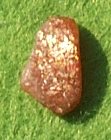 |
| Tiger's Eye | Labradorite | Alexandrite |
|---|---|---|
| Golden lines move to and fro. | Blue and green spots appear and disappear. | Green under daylight, blue under artificial light. |
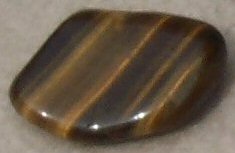 |
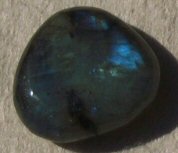 |


|
 Refraction is light being bent as it travels through something transparent. White light is made up of different colours, and these get refracted, or bent, different amounts. If sunlight shines through a shower of rain at the right angle, the light refracted through the raindrops can give a rainbow. If a transparent gemstone is carefully cut, then the light makes it sparkle with different colours. Diamond (left) is especially good at this, but cubic zirconia (right) is good as well and a lot cheaper!
Refraction is light being bent as it travels through something transparent. White light is made up of different colours, and these get refracted, or bent, different amounts. If sunlight shines through a shower of rain at the right angle, the light refracted through the raindrops can give a rainbow. If a transparent gemstone is carefully cut, then the light makes it sparkle with different colours. Diamond (left) is especially good at this, but cubic zirconia (right) is good as well and a lot cheaper!
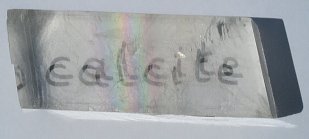 |
 |
 |
| Calcite has the peculiar optical property of double refraction. If you look at some writing through a piece of Iceland spar (transparent calcite), you don't see it once - you see it twice! What's more, if you twist the mineral round, one image wanders round the other one! | Ulexite has an even odder property. The image seems to float on top of it rather than be seen through it. It is sometimes called a TV rock because of this. | Kunzite is dichromatic, which means that it shows different colours if you look at it in different directions. This specimen (left) is transparent, but shows pink at the end where the light is travelling a different way. |